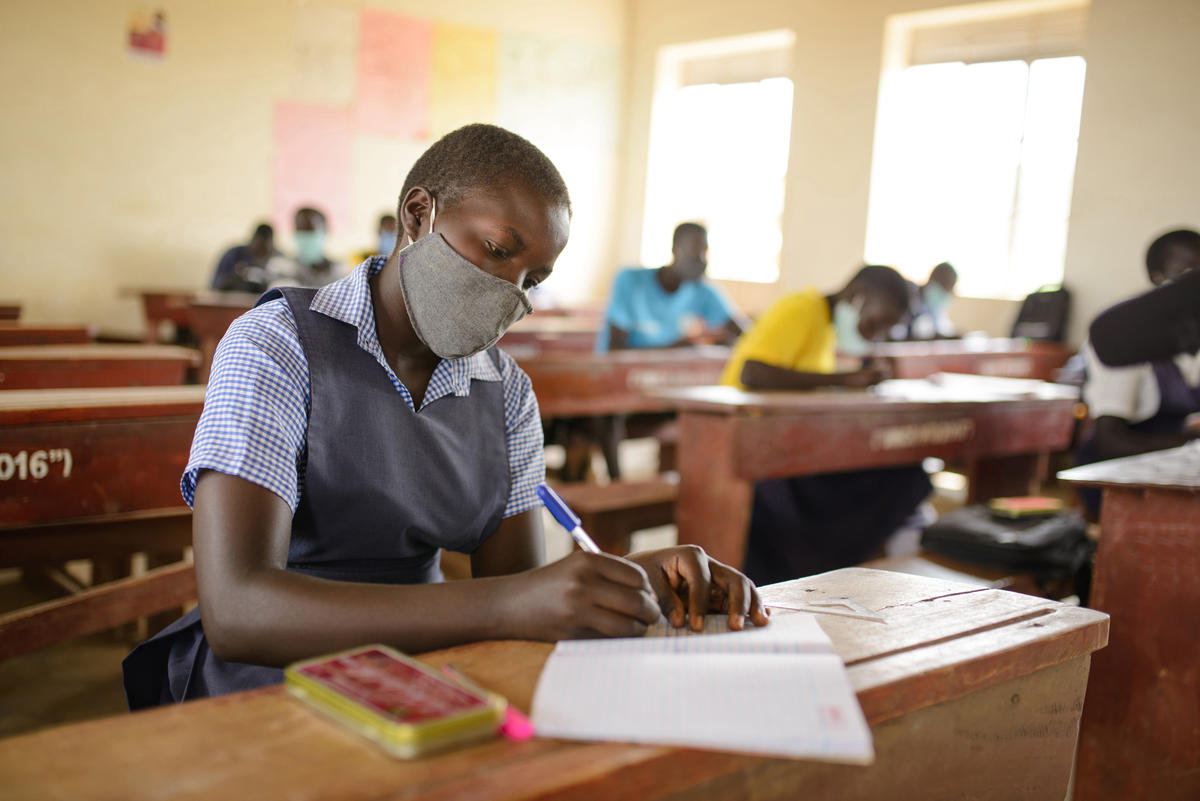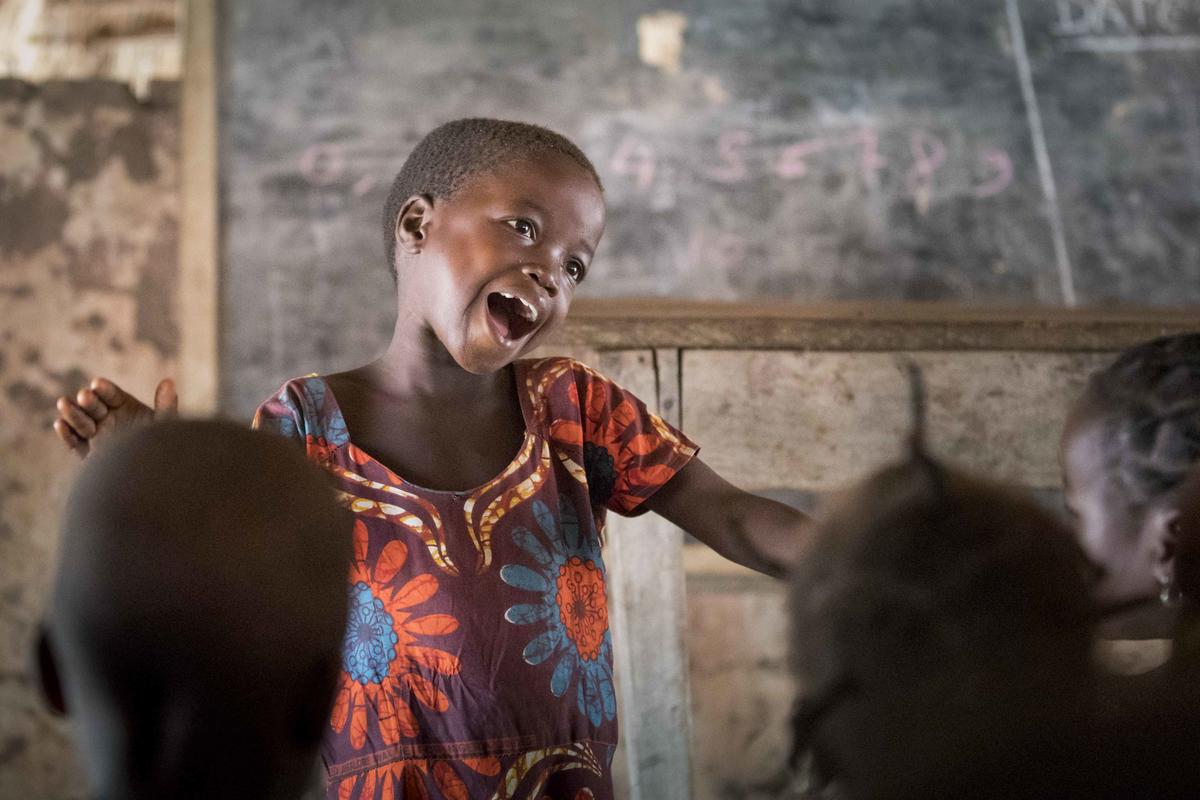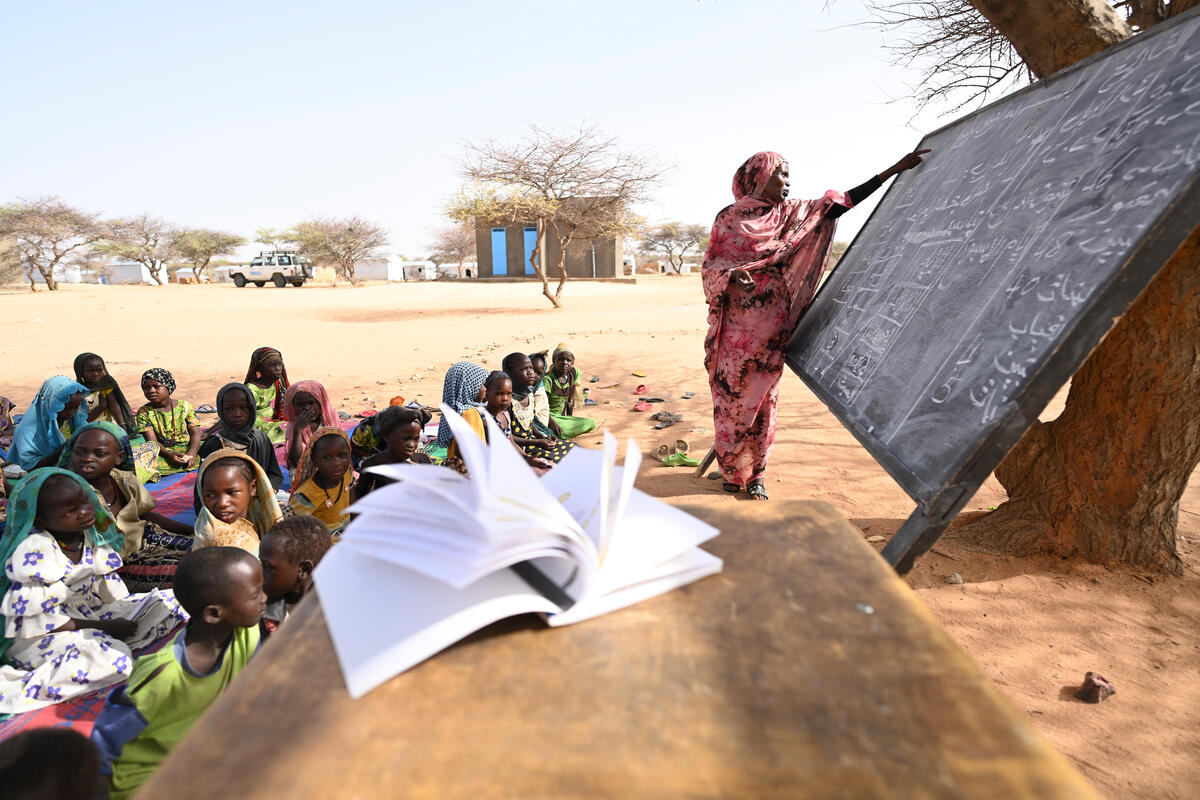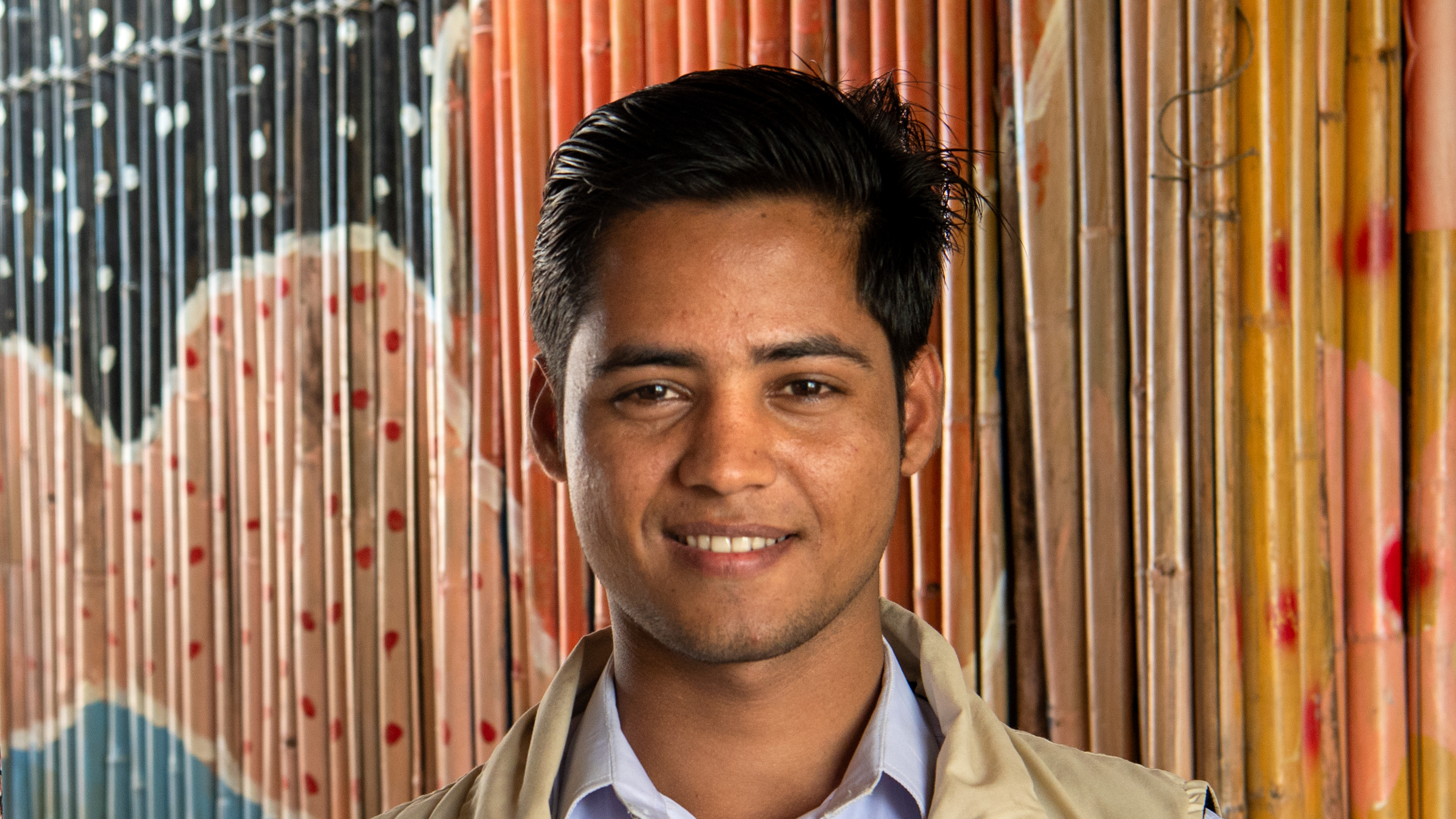"We're in a crisis right now": World's biggest refugee camp sees alarming spike in child deaths
"We're in a crisis right now": World's biggest refugee camp sees alarming spike in child deaths
DADAAB, Kenya, July 11 (UNHCR) - With the worst drought in 60 years gripping huge swathes of east Africa, UN High Commissioner for Refugees António Guterres spent Sunday touring this vast refugee complex to see for himself the desperate situation for the thousands of Somalis now arriving here every week.
Accompanied by a large press entourage Guterres visited the component camps of Dadaab, namely Dagahaley, Hagadera and Ifo. He talked to new arrivals, saw the registration, healthcare and food arrangements, and heard directly from humanitarian workers of the grim toll that drought in this region is taking on people newly arriving from Somalia, especially young children.
In a briefing for Guterres and the press, humanitarian workers were blunt in their assessment of the situation. "We're in a crisis right now," said Allison Oman, UNHCR's Senior Regional Nutrition and Food Security Officer. "We need extraordinary measures to help."
The alarm felt at Dadaab relates both to the escalating number of recent arrivals from Somalia, and the high death rates seen among young children in particular. With infants below five years in age, 3.2-fold and 3.8-fold increases in mortality are currently being seen at the Ifo and Hagadera camps compared with the prevailing rates a year ago. At the Dagahaley camp the increase has been six-fold.
I believe Somalia represents the worst humanitarian disaster in the world.
High Commissioner António Guterres
With exhausted families on the cusp of survival when they arrive at Dadaab, camp workers were racing on Sunday to identify those needing most urgent care. All newly arriving refugees are registered and given food, but often people are in so advanced a state of deterioration that it is too late to reverse the decline. Lower respiratory-tract infection claims most lives, followed by malnutrition and diarrhoea.
Guterres heard from a woman who told him her flight from Somalia had involved a walk of weeks, during which three of her children had died. "I became a bit insane after I lost them," the mother Musleema Aden told him. "I lost them at different times on my way."
In recent weeks Dadaab, along with the Dollo Ado camps in neighbouring Ethiopia, has borne the brunt of an epic outflow of people from Somalia stemming from a drought that is being cruelly amplified by conflict. Inside Somalia the effect of crop failures and the near-absence of aid means food prices have quadrupled. UNHCR believes that most people are waiting until the last moment to flee - a fact that may account for the exhausted state of many of the new arrivals.
Dadaab, which already housed well over 300,000 people before the crisis, is today seeing its population approaching 400,000. Refugees are spilling out into overflow areas around the main camps, where camp workers struggle to help them.
On Sunday Guterres spoke of the need for humanitarian agencies to help inside Somalia itself where currently their access is severely limited.
"I believe Somalia represents the worst humanitarian disaster in the world," he told journalists. "And that is why we need to do everything we can to make it possible to deliver massive humanitarian assistance inside Somalia."
By Adrian Edwards in Dadaab, Kenya








